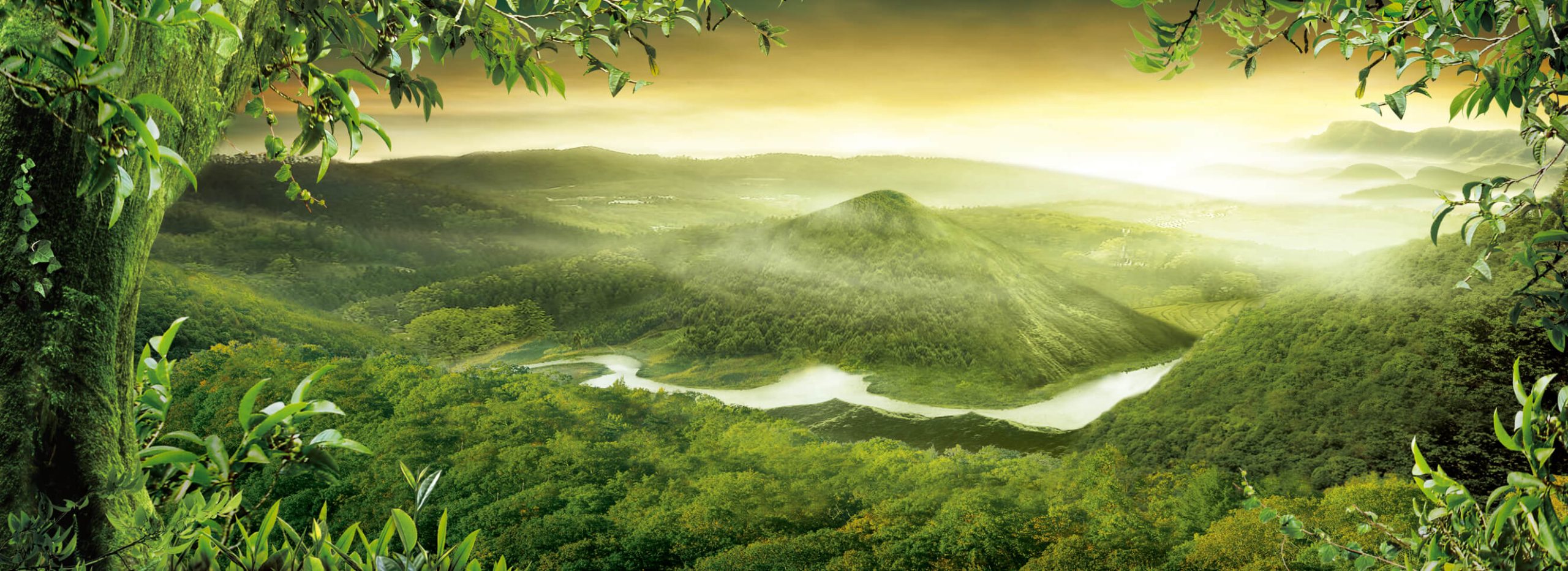Tea Knowledge & Culture
The Origin Native Habitat Of Tea Plants
Leading paleobotanists and experts on the study of ancient plant fossils, state that Xishuangbanna, in Southwest China, is the original native habitat of tea plants. This is the region in which the first tea trees grew, and from there spread geographically to create the various strains of tea around the world today. The three dominant facts supporting this belief are as follows:
1. Around 60 million years ago, Earth experienced a massive geological upheaval, a volcanic eruption so violent that it rendered the dinosaurs and most other creatures and plants extinct across much of the planet. Living things survived in only a few small areas, one of which was southwest China. The Earth’s climate then increased in temperature which stimulated the evolution of the few surviving plants, including the ancestors of modern tea plants. Their seeds took root and spread in the fertile ground.
2. The oldest wild tea plants in existence are still found in southwest China. They are normally 5 to 30 meters tall, with a trunk of up to 1.5 meters in diameter. Some are said to be more than 2700 years old.
3. Statistically, Xishuangbanna has the most wild tea plants with the most extensive distribution worldwide. There are approximately 23 genera and 380 species of Camellia plant across the world, and of these 15 genera and over 260 species, (about 70% of all Camellia plants) have been found in China. Most of these plants are concentrated in Xishuangbanna. According to the theories of E. O. Wilson, the American botanist and ‘father of Sociobiology’, the area with most genera and species of a plant is its native habitat, which indicates that Xishuangbanna is the native habitat of tea plants.

Related Information
The world-renowned ‘Menghai Paleozoic Tea Plantation’ is located in Xishuangbanna, Yunnan Province, where the plants enjoy a subtropical monsoon climate and grow at elevations of 1000 to 1500 meters. The average annual temperature is between 16℃ to 20℃ and the annual rainfall is about 1500mm, this constitutes the perfect conditions for the growth of big-leaf tea plants densely distributed in this area. In the early 1900s, explorations discovered 800 years old tea plants near Nannuo Mountain, and the famous 1700-year-old ‘Tea Tree King’ was discovered on the Bada Mountain in Menghai.
The Menghai Paleozoic tea plantations are mostly distributed in the intermontane flat lands, wreathed in clouds and mist all year round, therefore the humidity is relatively high, and the sunlight is usually diffused. The tea plants are moistened by vapour and dews so that the buds and leaves are fat and bold, tender and soft with small white tea-hairs on the surface, and they have an abundance of natural amino acids. Menghai is located in an area of low latitude, meaning the days are long. This spares the plants from long-term dormancy, enhances quality, and facilitates tea picking during all four seasons. The Menghai Paleozoic tea plantations are in the centre of the Kailas Range-Tengchong Volcanic Belt formed millions of years ago, and the fertile soil makes this area a paradise for tea plants. For most creatures, violent volcanic activity is a catastrophe, but for the tea plants, it became an opportunity, a catalyst for growth. With the deposit of volcanic ashes, the soil became weakly acidic, loose and porous, all very beneficial conditions for tea plants. The earth’s frequent crush movements helped to form a favorable magnetic field, and abundant microelements dissolved into the soil to provide tea plants with rich nutrition.
